
Note: these aren’t polymer clays. They are a variety of modeling clays suited for different purposes. Some are great for kids because they’re completely harmless and soft. Others are better for a finer grain or take paint better. Ones with glues and finer starches like corn starch will have a nicer finish. Some can be used for techniques similar to polymer clays – I’ve caned with salt doughs for example, in a limited way – and others aren’t suitable for the fine detail you get with PVC-based oven-bake polymer clay.
If you are looking for an airdrying clay as an alternative I highly recommend Das Airdrying white clay I have been using it for over 30 years and it never fails me.
If you love modeling clays of any kind then you may want to consider making your own DIY clay. If you are not already doing so, you may be surprised at how much money it can save you and how easy it really is. Take a look at this list of 7 different clay recipes and give one a try!
Pinch bowls and pottery bowls are very popular right now so make sure to have a go at making your very own small pinch bowls.
Clay for therapy
Before we get into these ideas, as you know working or playing with clay can be therapeutic for a number of reasons. As a reminder here are a few:
- Clay provides a sense of accomplishment: When you work with clay, you can create something tangible that you can hold in your hands. This can be a satisfying feeling, as it gives you a sense of accomplishment and pride in your work.
- Clay allows for creative expression: Clay is a medium that allows for a lot of creative expressions. You can mold it, shape it, and form it into whatever you can imagine, which can be a very therapeutic and cathartic process.
- Clay is a stress-reliever: Working with clay can be a relaxing and meditative activity, as it requires concentration and focus. This can help to take your mind off of other stressors in your life, allowing you to relax and unwind.
- Clay is sensory: Clay is a sensory medium that can be touched, squeezed, and manipulated. This can be very soothing and calming, as it allows you to engage with the clay on a tactile level.
We think working or playing with clay can be a very therapeutic and rewarding activity that can help to reduce stress, improve mental health, and promote creativity. So let’s get on with these ideas:
1- 3 Clay Recipes from The Artful Crafter. These are for a cold porcelain variety and make good, fine-grained modeling clays. The article has great tips for colouring and working the materials as well.
2- Jewelry Clay from Homemade Clay Recipe. (link no longer working) This is what I could call more of a salt dough recipe. It’ll have a moderate grain and needs to be finished with a sealer to keep humidity from damaging it over time. It is great for kids though, soft and easy to use.
3- Baking Soda Clay from Etsy Network , nice detailed tutorial for making your own clay
4- How To Make scculpey Clay from eHow is another cornstarch dough type clay.
5- No Bake Polymer Clay from Suzy Homemaker. The pictures in the tutorial are a little misleading being mostly polymer clay (PVC-based) clay items but the recipe is a decent cold porcelain clay recipe using glue as a binder and cornstarch as the filler. The result is a fine-grain product that you can color or paint.
6- DIY Air Dry Polymer Clay from Happiness Is Homemade
7- Non-Toxic Oven Clay from The Hippy Homemaker. This is a good one for kids and does, as advertised, make great kid keepsakes. Completely non-toxic, soft, and simple to use. Again, I would use a waterproof sealer on it to keep the ingredients from swelling or taking on humidity.
Here is a salt dough recipe from our sister site Craftbits.com.
Easy DIY Cold Porcelain Clay Recipe (No Bake Option Too!)
If you’ve ever wanted to make your own cold porcelain clay at home, you’ll love this simple recipe. Cold porcelain is soft, smooth, and perfect for sculpting delicate details—like flowers, beads, and tiny figurines. It’s similar to a mix between traditional salt dough and polymer clay (like Fimo), but it’s made with household ingredients you probably already have in your pantry.
Cold Porcelain Clay Ingredients
- 1 cup corn starch (cornflour)
- 2 cups baking soda
- 1 ¼ cups cold water
Equipment Needed
- Non-stick saucepan
- Wooden spoon
- Medium mixing bowl
- Damp cloth, plate, or lid for covering
Step-by-Step Instructions
- Mix the clay base
In a non-stick pot, combine the corn starch, baking soda, and cold water. Stir well until the mixture is lump-free and smooth. - Cook the clay
Place the pot over low to medium heat. Stir constantly until the mixture thickens and looks like mashed potatoes. - Cool the dough
Transfer the clay to a clean bowl. Cover it with a damp towel, lid, or plate to prevent it from drying out. Let it cool completely before handling. - Shape and sculpt
Once cool, knead the dough until smooth. Use your cold porcelain clay to sculpt ornaments, beads, or decorative pieces. If your clay starts to crack or feels dry, lightly dampen your fingers with water and smooth it out. - Drying your clay
Air dry your creations for about 24–48 hours, depending on size and thickness. For faster drying, place the items in a 150°F oven with the door slightly open, or preheat your oven to 350°F, switch it off, and let your clay sit inside as it cools.
Tips for Working with Cold Porcelain Clay
- Store unused clay wrapped in cling film or inside an airtight container to prevent drying.
- Avoid adding too much water while sculpting, as this clay is softer and can dissolve if overworked.
- Once dry, pieces can be sanded, painted with acrylics, or sealed with clear varnish for durability.
This homemade cold porcelain clay recipe is perfect for beginner crafters, DIY jewelry makers, or anyone wanting an affordable alternative to store-bought clays.
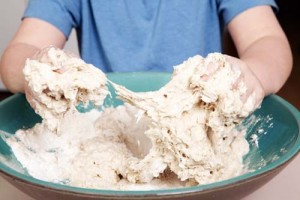
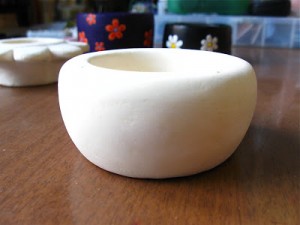
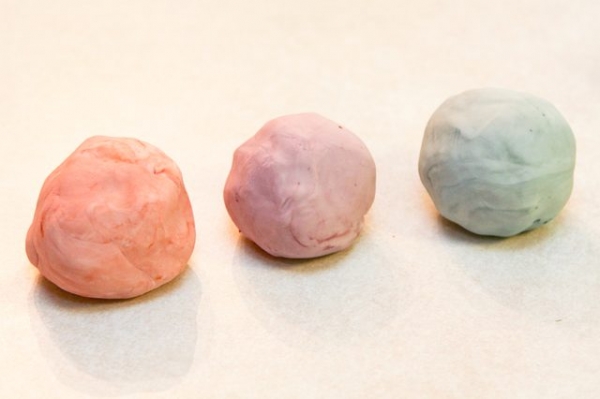
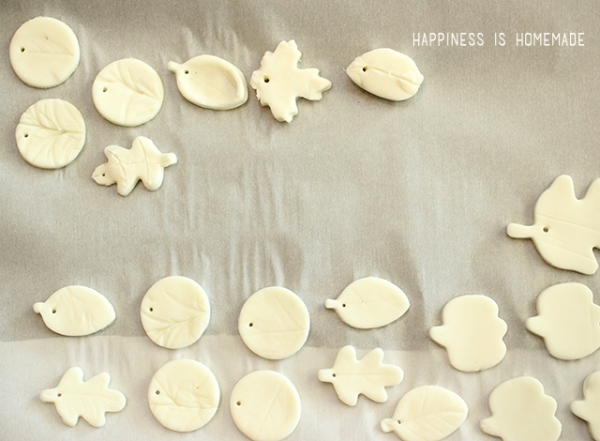

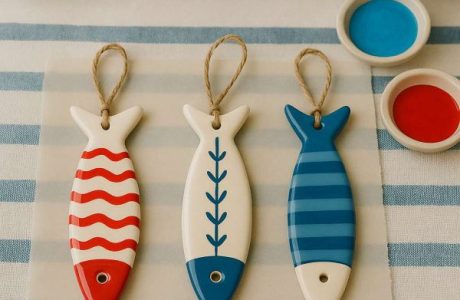
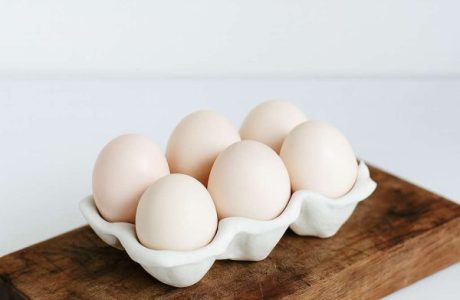

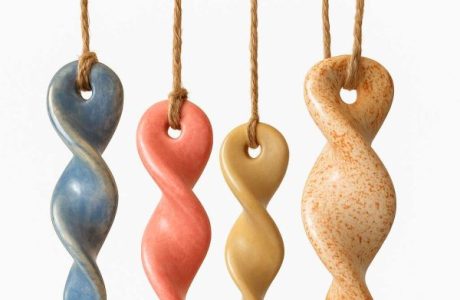
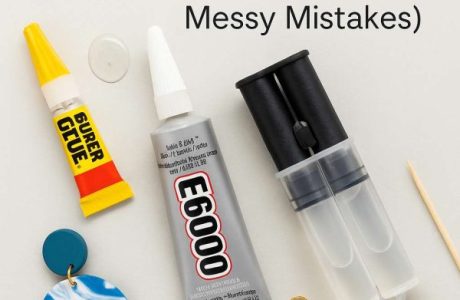
I wish you’d made the distinction that these are not substitutes for polymer clay and that you can’t use them for many of the techniques people enjoy using polymer for. It’s all too common for newbies to try these homemade recipes and then beat themselves up when they fail miserably making complex canes or detailed sculptures. These are great recipes for modeling clay and have their place, certainly. But confusion just makes for unhappy crafters.
Thanks for taking care of it Elaine. I did see that you weren’t the author of the post. but I’m glad you clarified and fixed it up. Happy claying…of all types!
Ugh. At the time of publication it wasn’t. Removed that link now.
Thank you for sharing! Would any of these recipes work to make garden markers? And, expecting that a sealer is needed, does anyone have a recommendation for something affordable?
Any of the ones that use glue as a base would likely be fine (cold porcelains instead of play doughs or ones with salt or flour) and yes, I would use a sealer.
For my outdoor work I use Varathane outdoor formula waterbased clear gloss which you can get at hardware stores or places like Walmart. Minwax also has a version.
I tried to make leaf bowls with a non cook porcelain receipt I got off the internet. It uses glue, corn starch, lime juice and baby oil. It was fine until we put it in the bowls. Then it began to “sag” and sort of “puddled toward the bottom of the bowl. Can you recommend a good receipt that will keep it’s shape until it dries?
Thanks Janet
Hi Janet!
Stuff with cornstarch is going to slump a bit as it’s non-newtonian solid / liquid (behaves the opposite of what it should for it’s state).
Once you put it in the mold to dry I’d grab a hair dryer or heat gun and speed up the air drying to not give it the chance to pool and slump. Cold porcelain is great stuff but each recipe has it’s quirks.
i disagree with ginger Davis. These clay recipes were around in the 1970’s maybe even longer and you can do wonderful projects with these recipes and they are equal or even better than Polymer Clay.